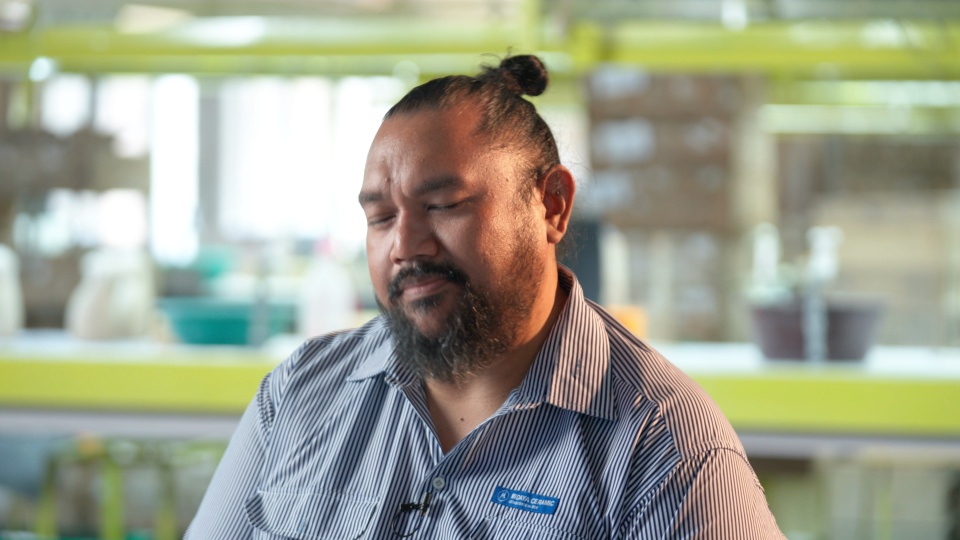Suddenly Not Competitive
Anura Warnakulasooriya, who had graduated college in the United States and was working in the technology industry, received a call from his dad, Dayasiri. “I got an SOS call from Dad who said he had a lot of workers but not enough work,” Anura recalls. “The first thing I did was go to China to figure out how to compete.”
The trip was a sobering experience, one where he learned the family business couldn’t survive competing at such low-price points. “So, I looked at what they couldn’t do, what they didn’t want to do, and that’s where we could score,” he says.
Back in Sri Lanka, he focused on a new business strategy and employed a fresh approach to the business that already had such a rich history. Rather than creating mass quantities of consumer goods, Midaya could make high-quality, hand-made items and cater to a clientele that needed smaller quantities. Instead of relying on five or six very large brands, the company could cast a wider net by establishing a foothold in Europe and the UK offering higher-end products to a wide variety of customers.
Instead of making figurines, Midaya makes a variety of ceramics from lamps to vases to fashion accessories to kitchen decorations, and sells them to various niche markets. Anura also opened two retail stores to sell its own ceramics.
Inefficient Operations
Armed with a new plan, Anura then tackled operations, which he knew needed to be much more efficient and streamlined if the new strategy was going to find success. The company ran on Tally (an accounting package out of India) and used Google Sheets and Open Office to handle all other data.
“We had a manual process that was okay, but our biggest problem was duplication of data,” he says. “We do a lot of data collection—data on quality and rejections for example. Making sure the data wasn’t duplicated was a pain.”
Trying to track products as they flow through manufacturing was taxing at best.
Making a custom ceramic item takes 14 to 16 steps, explains Anura. The company’s library of SKU numbers is in the tens of thousands. But at any one time, they could be making 300 different items for 12 to 20 different customers. Some items have to go through specific departments multiple times to get to final production.
“For example, some items need to go through three firings after various other processes so our production can get quite complicated,” he says. “Almost all items are exclusive, so we don’t take that item and reproduce it for anyone else. And remember, everything is handmade. We use molds to get a basic shape but the finishing, polishing, glazing, and everything else is done by hand.”
Making hand-made ceramic items requires incredible skill. “It takes a year to get trained in the art of manufacturing; we have ceramic magicians,” says Anura. “What they make a lot of people don’t believe was made by hand.”
Too Much Stock on Hand
Without an accurate inventory count, Midaya made more products to make sure they wouldn’t run out if something broke or cracked. Without good data to know which product type or color or customer was more or most profitable, they continued making anything for anybody. Excess inventory tied up cash and cut into profits.
ERP Wish List
Anura, who worked in technology before joining the family business, knew he needed to get access to better data and have it all in one system.
“I looked for an ERP system for about a year, but I didn’t have a budget for an expensive, high-end ERP like SAP that would have taken us a long time to implement,” he says, “I tried someone local, but when they saw our processes, they said their product was not geared to something this complicated.”
He then looked at a popular ERP and saw a demo, but reference checks steered him in a different direction.
“At that time, it was expensive, and a friend in the UK said most of them were complicated and difficult to use. So, I did not have much confidence in them. He also informed me that most charge by the number of users, and I wasn’t sure how many we would grow to once we started training everyone.”
 Canada (English)
Canada (English)
 Columbia
Columbia
 Caribbean and Puerto Rico
Caribbean and Puerto Rico
 Ecuador
Ecuador
 India
India
 Indonesia
Indonesia
 Ireland
Ireland
 Malasya
Malasya
 Mexico
Mexico
 Panama
Panama
 Peru
Peru
 Philippines
Philippines
 Singapore
Singapore
 South Africa
South Africa
 Sri-Lanka
Sri-Lanka
 Thailand
Thailand
 United Kingdom
United Kingdom
 United States
United States








